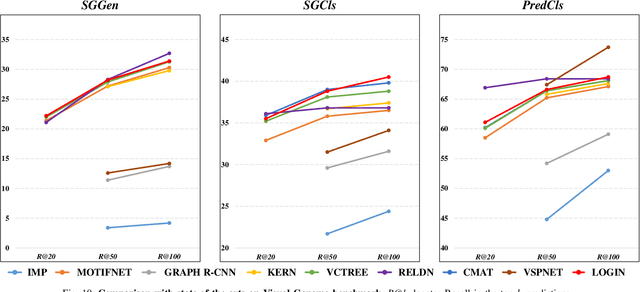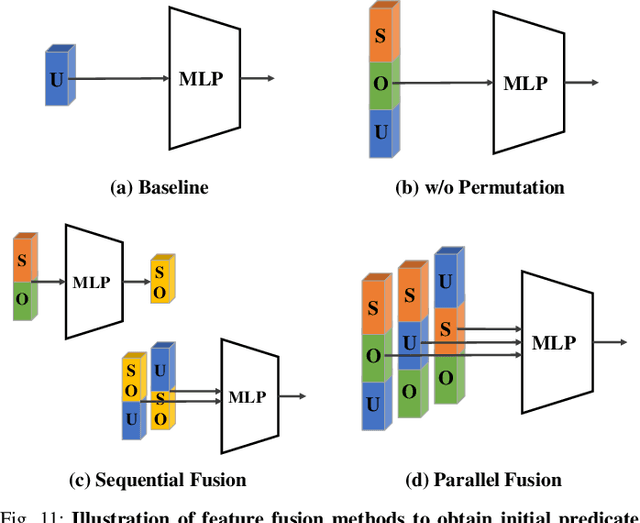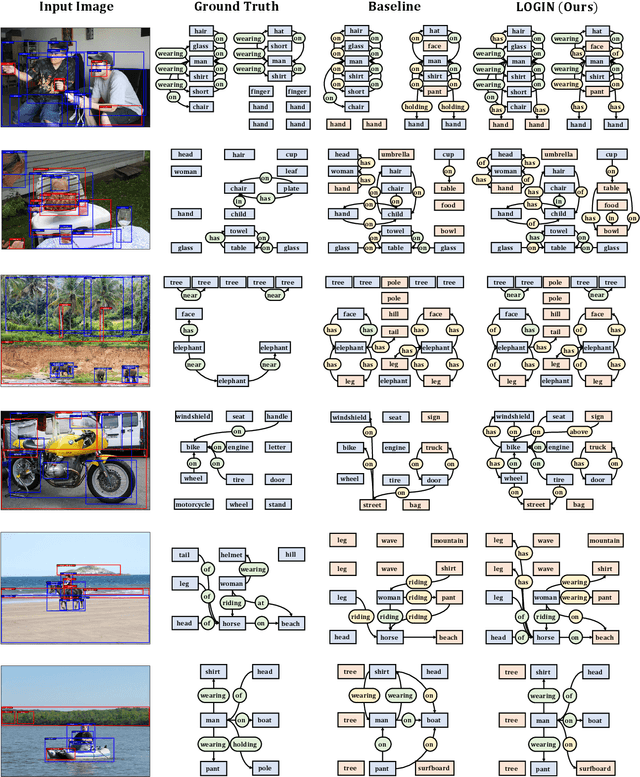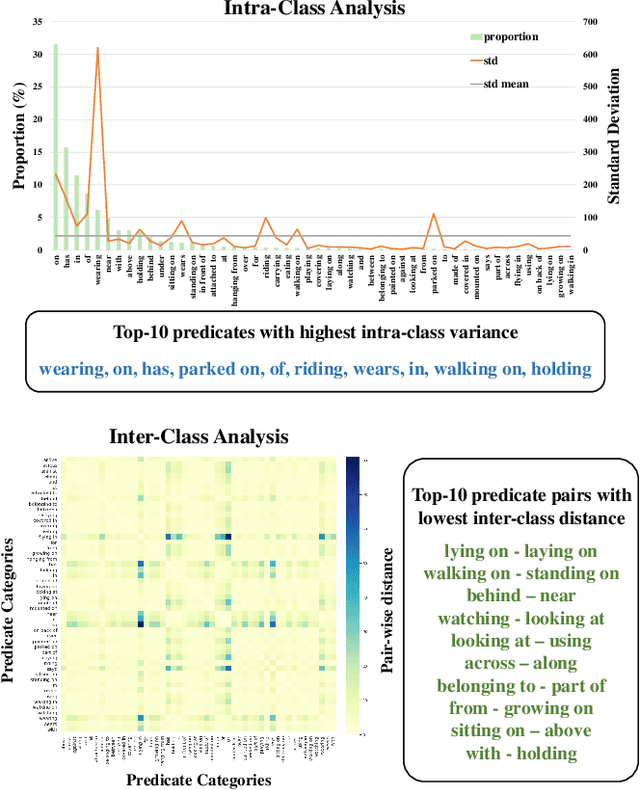Tackling the Challenges in Scene Graph Generation with Local-to-Global Interactions
Paper and Code
Jun 16, 2021



In this work, we seek new insights into the underlying challenges of the Scene Graph Generation (SGG) task. Quantitative and qualitative analysis of the Visual Genome dataset implies -- 1) Ambiguity: even if inter-object relationship contains the same object (or predicate), they may not be visually or semantically similar, 2) Asymmetry: despite the nature of the relationship that embodied the direction, it was not well addressed in previous studies, and 3) Higher-order contexts: leveraging the identities of certain graph elements can help to generate accurate scene graphs. Motivated by the analysis, we design a novel SGG framework, Local-to-Global Interaction Networks (LOGIN). Locally, interactions extract the essence between three instances - subject, object, and background - while baking direction awareness into the network by constraining the input order. Globally, interactions encode the contexts between every graph components -- nodes and edges. Also we introduce Attract & Repel loss which finely adjusts predicate embeddings. Our framework enables predicting the scene graph in a local-to-global manner by design, leveraging the possible complementariness. To quantify how much LOGIN is aware of relational direction, we propose a new diagnostic task called Bidirectional Relationship Classification (BRC). We see that LOGIN can successfully distinguish relational direction than existing methods (in BRC task) while showing state-of-the-art results on the Visual Genome benchmark (in SGG task).
 Add to Chrome
Add to Chrome Add to Firefox
Add to Firefox Add to Edge
Add to Edge